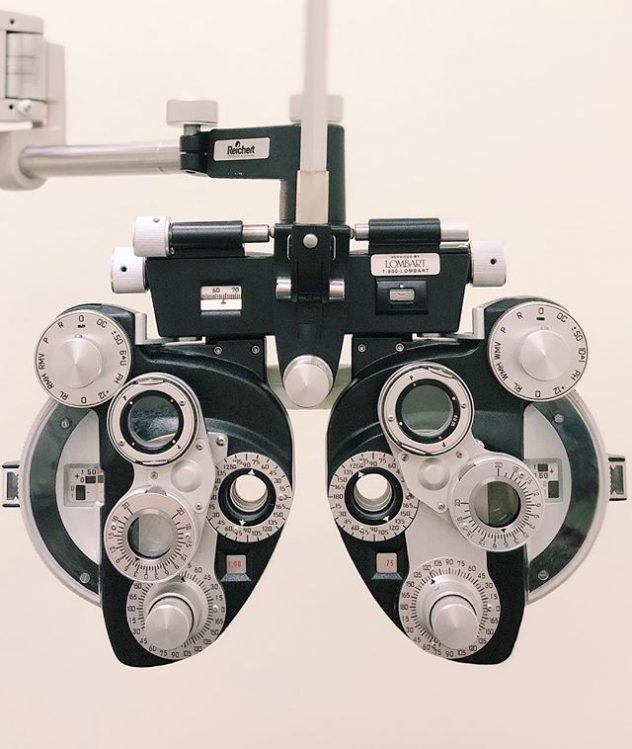
Category: Eye Exam
Back to School Checklist Should Include an Eye Exam
 Remember to schedule your child’s back to school comprehensive eye exam early. September brings a rush of students scheduling appointments and wanting to achieve their best academic work, which means they need to see well. Your child’s eye exam should be part of any back to school checklist.
Remember to schedule your child’s back to school comprehensive eye exam early. September brings a rush of students scheduling appointments and wanting to achieve their best academic work, which means they need to see well. Your child’s eye exam should be part of any back to school checklist.
Simple Tips for Healthy Eyes
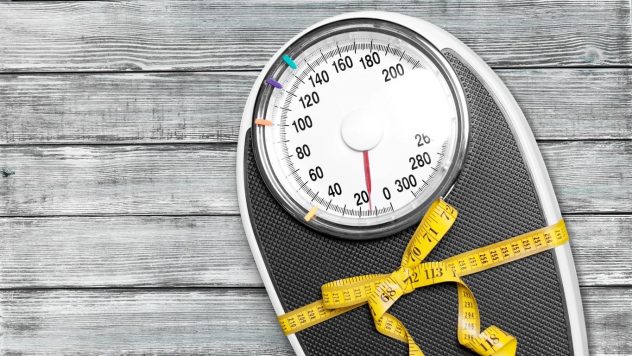
Maintain a healthy weight
Being overweight or obese increases your risk of developing diabetes and other systemic conditions, which can lead to vision loss, such as diabetic eye disease or glaucoma. If you are having trouble maintaining a healthy weight, talk to your doctor.

Wear protective eyewear.
Wear protective eyewear when playing sports or doing activities around the home. Protective eyewear includes safety glasses and goggles, safety shields, and eye guards specially designed to provide the correct protection for a certain activity. Most protective eyewear lenses are made of polycarbonate, which is 10 times stronger than other plastics. Many eye care providers sell protective eyewear, as do some sporting goods stores.
Make Vision a Health Priority
With today’s medical advances, more and more people are living longer and celebrating good health: They are eating healthy foods, they are staying active, they are controlling their blood pressure and cholesterol levels, and they are not smoking.
 Practice good eye health … Make vision a health priority by seeing your eye care professional
Practice good eye health … Make vision a health priority by seeing your eye care professional
Feeling good and living life to its fullest also means taking good care of your eyes. Even if you enjoy relatively good vision now, visiting your eye care professional once a year is the best thing you can do to care for your eyes. Getting an eye exam is more important now than ever before, because as you get older, you are at higher risk of developing several age-related eye diseases and conditions, including—
- Age-related macular degeneration
- Cataract
- Diabetic retinopathy
- Glaucoma
In their early stages, these diseases often have no warning signs or symptoms. In fact, the only way to detect them before they become serious and cause vision loss is through a comprehensive dilated eye exam. Fortunately, if your eye care professional catches and treats these conditions early, he or she can protect your eyesight.
What is a dilated eye exam?
A comprehensive dilated eye exam is important to maintain and protect healthy vision. During this exam, drops are placed in the eyes to dilate or widen the pupils (the round opening in the center of the eye). The eye care professional uses a special magnifying lens to examine the retina (the light-sensitive tissue at the back of the eye) and optic nerve (the bundle of fibers that send signals from the retina to the brain) for signs of damage and other eye problems.
Take charge of your vision
In addition to seeing your eye care professional routinely, you can do the following things to protect your vision:
- Stop smoking
- Eat a diet rich in green leafy vegetables and fish
- Exercise
- Maintain normal blood pressure
- Wear sunglasses and a brimmed hat anytime you are outside in bright sunshine
- Wear safety eyewear when working around your house or playing sports
Information and resources
The National Eye Institute (NEI) is part of the National Institutes of Health and the federal government’s lead agency for vision research that leads to sight-saving treatments, and it plays a key role in reducing visual impairment and blindness. For more information, visit the NEI Website at www.nei.nih.gov
Keeping your eyes healthy will insure your most important sense – SIGHT!
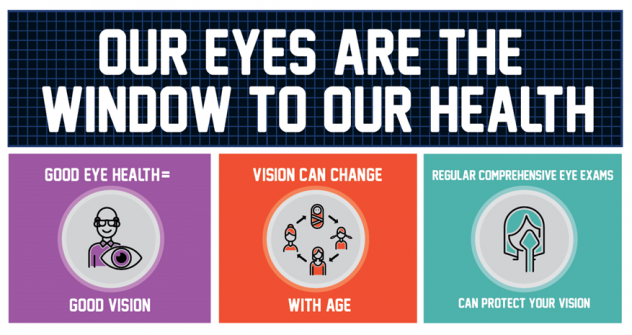
Your eye examination includes: checking the front of the eyes making sure that the cornea is healthy without tear malfunction, the internal natural lens of the eye is clear without cloudiness or cataract, the optic nerve is not damaged due to glaucoma or other factors, and the central vision of the eye is not impaired from retinal changes or macular degeneration.
Simple Tips for Healthy Eyes
Your eyes are an important part of your health. There are many things you can do to keep them healthy and make sure you are seeing your best. Follow these simple steps for maintaining healthy eyes well into your golden years.
Have a comprehensive dilated eye exam. You might think your vision is fine or that your eyes are healthy, but visiting your eye care professional for a comprehensive dilated eye exam is the only way to really be sure. When it comes to common vision problems, some people don’t realize they could see better with glasses or contact lenses. In addition, many common eye diseases such as glaucoma, diabetic eye disease, and age-related macular degeneration often have no warning signs. A dilated eye exam is the only way to detect these diseases in their early stages.
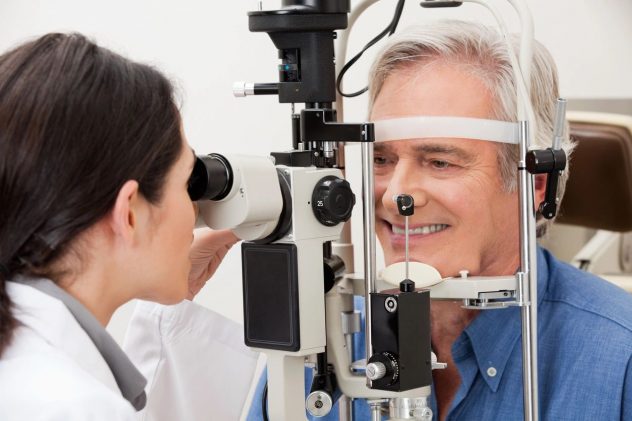

During a comprehensive dilated eye exam, your eye care professional places drops in your eyes to dilate, or widen, the pupil to allow more light to enter the eye the same way an open door lets more light into a dark room. This dilation enables your eye care professional to get a good look at the back of the eyes and examine them for any signs of damage or disease. Your eye care professional is the only one who can determine if your eyes are healthy and if you are seeing your best.
Blurry vision is not the only reason to have an eye exam


Our Eyes Are the Window to Our Health



The eyes are the only place in the body where we can actually see your blood vessels. For that reason, many health issues effecting other parts of the body can be observed in the eyes and sometimes before that disease is known to you. Medication side effects can affect your vision too.
Golden State Warriors ? point guard, Stephen Curry ⛹?♂️, had a shooting slump recently and guessed what he changed to improve it?
CONTACTS! ? Seriously! Curry has a condition called #keratoconus in which the cornea, normally a circle, progressively thins and takes on a cone shape. When the cornea has a cone shape, it is unable distribute the light entering the eye equally and leads to blurred or distorted vision. Schedule an annual eye exam with our ? doctors and you too can become a shooting legend like Steph Curry (sorry, no guarantees ?)

Proper Eyewear and Healthy Vision Crucial for Athletes’ Performance
Spring is here, and kids everywhere are gearing up for another season of their favorite spring sport – baseball, soccer, softball and lacrosse. It’s estimated that more than 21 million kids between 6 and 17 are active in at least one sport. While parents go to extreme efforts to make sure they have the correct protection of guards and gear, one safety precaution is often overlooked.
Ensuring safe vision for youth participating in sports is essential. That’s why Dr. Daniel Yamamoto is sharing some key considerations for the upcoming spring season/this season of Little League:
- Schedule an appointment: The school eye screening is simply not enough. For sports that involve throwing, kicking and catching, kids need a regular, in-person comprehensive exam that will focus on depth perception, contact lens wear, binocularity (how eyes work together as a pair), peripheral vision and more. It’s the best way to ensure your child’s eyes are healthy and their vision is ready to play.
- Use appropriate safety eyewear: In addition to getting the right protective headgear, children need to have the right eye protection gear. For children with glasses, provide a pair without metal frames to avoid potential injuries due to activities such as getting hit with a ball. To prevent injury, athletes are advised to wear eye protection that may include safety glasses and goggles, safety shields, and eye guards designed for a particular sport and that meet American Society for Testing and Materials (ASTM) standards. These types of protection are designed to be impact resistant without clouding an athlete’s vision.
- Sun Protection: Wearing a hat is helpful, but will only get you so far. The AOA’s 2017 Eye-Q survey found that three out of ten Americans don’t wear sunglasses while playing outdoor sports. Sunglasses that offer 100% UV protection are important to protect eyes from sun damage.
By visiting Dr. Daniel Yamamoto regularly for comprehensive eye care, athletes can perform their best on the court or field with clear and healthy vision, as well as be sure their eyes are protected and, hopefully, bring home a win.
Did you know we sell these #ocusoft products in our office?
Make an appointment with our doctors to see if these are right for you! ?#alamoanaeye
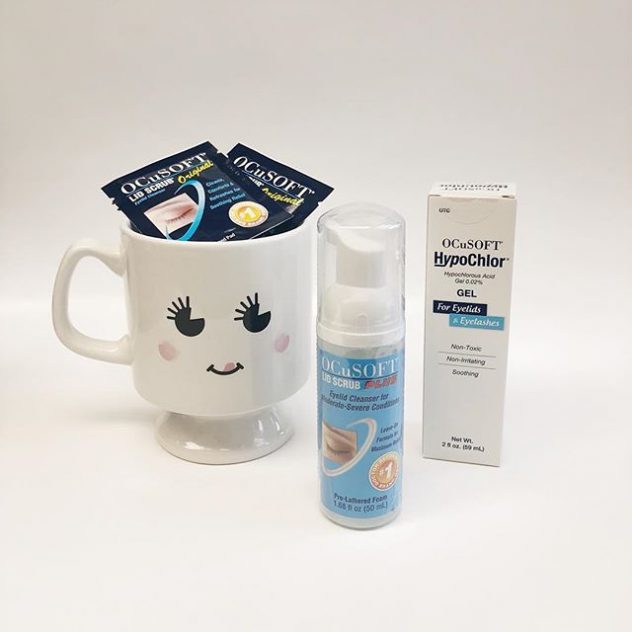

Did you schedule your annual eye ? exam?
Did you schedule your annual eye ? exam? Annual eye exams are an important part of maintaining your health. Just as you see your family doctor for an annual physical, you should also see your optometrist for an eye exam.
If not, call or text us today! ?☎️
View on Instagram http://bit.ly/2ROhBtF
November is Diabetes Awareness Month


More than 30 million Americans have diabetes and another 84 million have prediabetes and are at risk for developing type 2 diabetes, according to the Centers for Disease Control (CDC). In addition, diabetes is the leading cause of new cases of blindness among adults. As prevalent as the condition is, 79 percent of Americans don’t know diabetic eye diseases have no visible symptoms and more than half do not know comprehensive eye examinations can detect diabetes, according to the most recent American Eye-Q® Survey conducted by the American Optometric Association (AOA).
During November’s Diabetes Awareness Month, the AOA, the leading authority in eye and vision healthcare, is committed to educating the public about the relationship between diabetes and eye health, as the annual Eye-Q survey shows that after learning about the topic many participants said they would be prompted to take steps to ensure their eye health. The AOA advocates for regular, dilated eye exams for those with diabetes, or at risk for diabetes, because the alternatives, like online vision apps, only check for refractive errors like nearsightedness, farsightedness or astigmatism and cannot detect diabetes.
Early Detection and Treatment is Key in Protecting Vision from the Effects of Glaucoma
Glaucoma affects 2.7 million people in the United States and is the second leading cause of blindness, yet understanding and awareness of the disease is low. In fact, 72 percent of Americans don’t know that glaucoma typically has no early warning signs or symptoms, according to the American Optometric Association’s (AOA) 2014 American Eye-Q® consumer survey.
Often referred to as the “sneak thief of sight,” glaucoma is a group of eye disorders that can damage the optic nerve and impair peripheral vision. If left untreated, glaucoma can lead to complete loss of sight. While the disease does not have a cure and is not preventable, it is treatable and can be detected in a comprehensive eye exam provided by your optometrist.
“A common misconception is that glaucoma only affects older adults when, in reality, it can happen at any age. In fact, it’s most commonly detected in people in their 40s,” said Dr. Inouchi. “The key is to identify and diagnose the disease early in order to promptly treat and slow the progression of vision loss.”
Americans are also largely unaware of the factors that put them at greater risk for developing glaucoma – only 13 percent of Americans know that a person’s race increases their chances for developing the disease. According to the Glaucoma Research Foundation, glaucoma is six to eight times more common in African Americans than Caucasians. Additional factors that put someone at greater risk for glaucoma include those who have a family history of glaucoma, diabetes, hypothyroidism, are over age 60 or individuals who have had severe eye trauma.
Treatment for glaucoma includes prescription eye drops and medication to lower pressure in the eyes. In some cases, laser treatment or surgery may be effective in reducing pressure.
In addition to yearly, comprehensive eye exams, Dr. Daniel Yamamoto & Dr. Tracie Inouchi suggests the following tips to help maintain overall eye health and clear, comfortable vision:
- Eat green, leafy vegetables and foods rich in nutrients like beta carotene, vitamin C and zinc to protect eyes from disease.
- Cut down on those bad habits such as smoking and consuming alcohol or excessive caffeine, which can all be harmful to the eyes.
- If you work in front of a computer, practice the 20/20/20 rule: every 20 minutes, take a 20 second break and look at something 20 feet away to help avoid digital eye strain.
- Wear sunglasses with UV-A and UV-B protection year-round.
Contact Dr. Daniel Yamamoto & Dr. Tracie Inouchi today at (808) 949-2662 to make an appointment for a comprehensive eye exam and to learn more about ways to help prevent vision loss from glaucoma.
Most Americans Experience Digital Eye Strain from Overexposure to Computers According to Survey
Dr. Tracie Inouchi Shares Five Simple Steps to Relieve Digital Eye Strain at Work
The average U.S. worker spends seven hours a day on the computer either in the office or working from home and the American Optometric Association’s (AOA) 2015 American Eye-Q® survey reports that 58 percent of adults have experienced digital eye strain or vision problems as a direct result.
Symptoms of digital eye strain, also known as computer vision syndrome, include eyestrain, headaches, blurred vision, dry eyes and neck and shoulder pain. The AOA recognizes the need to address this issue, and as Save Your Vision Month 2016 kicks off in March, they encourage both employees and employers to make eye health a priority. The five tips below can be easily implemented in most office spaces:


- Keep a distance: The AOA recommends sitting a comfortable distance from the computer monitor where you can easily read all text with your head and torso in an upright posture and your back supported by your chair. Generally, the preferred viewing distance is between 20 and 28 inches from the eye to the front surface of the screen.
- View from a different angle: Ideally, the computer screen should be 15 to 20 degrees, or about 4 to 5 inches, below eye level as measured from the center of the screen.
- Decrease glare: While there is no way to completely minimize glare from light sources, consider using a glare filter. These filters decrease the amount of light reflected from the screen.
- Blink often: Minimize your chances of developing dry eyes when using a computer by making an effort to blink frequently.
“As more people spend their days at work on a computer and their free time on handheld devices, doctors of optometry are seeing more patients who are experiencing digital eye strain,” said Steven A. Loomis, O.D., president of the AOA. “The problem can be relieved by taking simple steps. Just looking away from the computer for brief periods of time throughout the day can help with discomfort and long term eye problems.”
Additional findings on technology and eye health from the AOA Eye-Q Survey:
- 59 percent of those surveyed responded that desktop computers and laptops were the devise that bothered them most. Mobile phones were second at 26 percent, followed by tablets at 8 percent.
- 61 percent of people surveyed admit to using multiple digital devices at the same time.
- 56 percent responded that their primary use for digital devices is entertainment (reading, watching movies or shows, video games).
- 76 percent of people know that blue light from digital devices affects vision.
If you think you are experiencing digital eye strain, schedule an appointment with Dr. Tracie Inouchi at (808) 949-2662

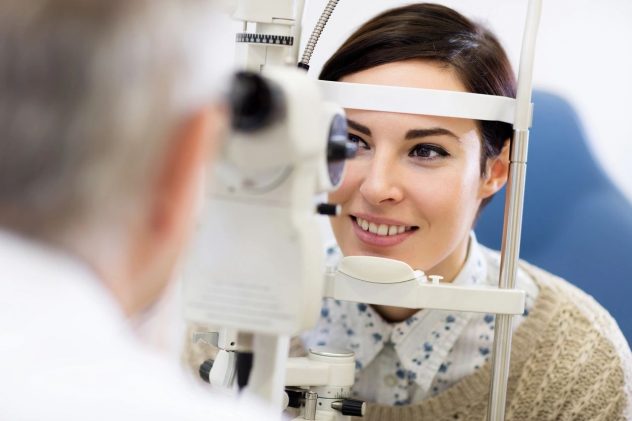 Practice good eye health … Make vision a health priority by seeing your eye care professional
Practice good eye health … Make vision a health priority by seeing your eye care professional